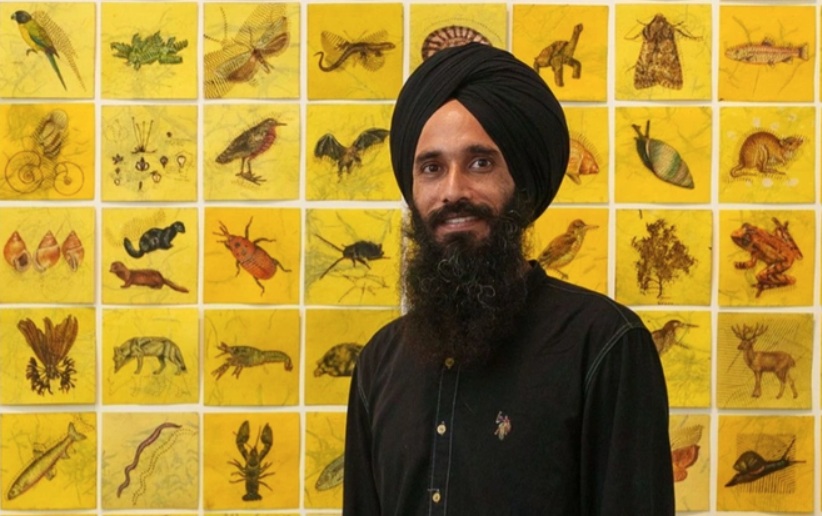Brian Bassanio Paul writes on the journey of Sikh sacred music in Pakistan, home to approximately 20K Sikhs, a small minority compared to the millions who lived in Panjab before the 1947 Partition of India. There are roughly 200 historical Sikh shrines noted by Iqbal Qaiser in the book Historical Sikh Shrines in Pakistan. The Pakistan Sikh Gurdwara Prabandhak Committee (PSGPC) currently manages around 21 Gurdwaras. In these sanctuaries, kirtan (hymn singing) is the heartbeat of Sikh liturgical life. The Guru Granth Sahib (Sikh scripture and charter, GGS) stands out among world religious texts, which are arranged by rags (musical mode). The first custodians of Sikh kirtan were the rababis (rabab instrument players) who were Muslim musicians; Bhai Mardana accompanied Guru Nanak, the first Sikh Sovereign. Families such as Balwand–Satta and Babak-Chatra transmitted Gurbani (GGS verses) through generations. Rababis performed in Sikh shrines and interfaith gatherings. Many rababis migrated to Pakistan after the Partition and the tradition nearly vanished. Today, a few descendants remain but their role in regular liturgical kirtan is almost gone. Now, ragis (hymn singers), introduced by Guru Arjan, the fifth Sikh Sovereign, form the backbone of Sikh kirtan. The Partition disrupted the guru-shishya (master-disciple) lineages. It also scattered manuscripts and destroyed instruments. Many Sikh ragis migrated to India; many rababis lost their congregations. After 1947, the most noticeable change in instruments was that the harmonium, a European reed organ from the 19th century, took over. It replaced native string instruments such as the rabab, sarinda, sarangi, dilruba, and taus. The tabla (pair of hand drums) replaced the pakhawaj, mridang, and jori. Today, the harmonium and tabla dominate. This raises questions about temperament and microtonality for the harmonium fixes pitch, which somewhat limits ‘rag’ fidelity. Regula Qureshi, an ethnomusicologist, argues that this alters the very ontology of Gurbani music. Festivals, diaspora support, grassroots teaching, and digital connectivity provide pathways for renewal. Sikh music in Pakistan is more than a set of hymns. It is testimony to survival, a sign of human will to keep singing even when history tried to still the voice. However, in Indian Panjab there is now an effort to revive the original string instruments.


Like what you're reading? Subscribe to our top stories.
Liv Forum provides a digest of analysis on major issues facing Indian (East) Panjab and Sikhs globally.
In accordance with our Privacy Policy, we will never share or sell the information of our subscribers.


.jpg)


.jpg)
